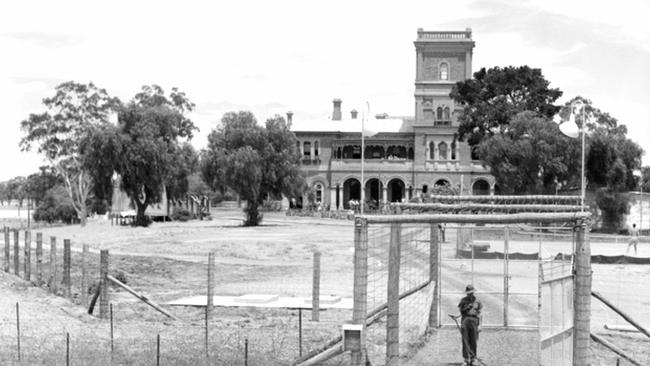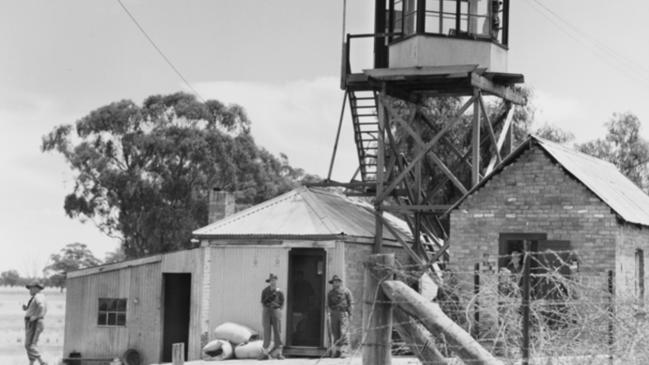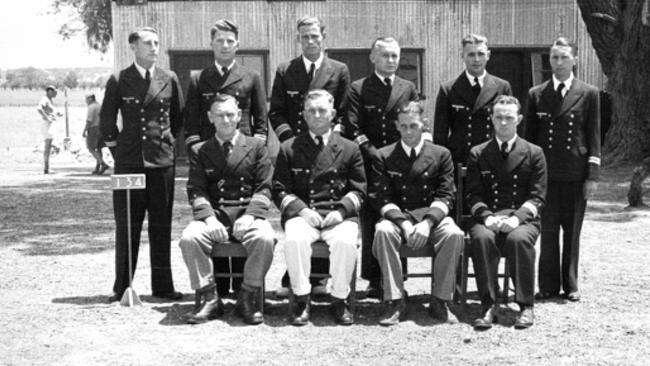Nazi Theodor Anton Detmers and his escape from a POW camp in Shepparton
Nazi naval officer Theodor Anton Detmers masterminded a bold escape from a POW camp near Shepparton in 1945. The plot was months in the planning, with newspapers screaming that Nazi’s were on the loose in Victoria.

Victoria
Don't miss out on the headlines from Victoria. Followed categories will be added to My News.
On a mild January night in 1945, Nazi naval officer Theodor Anton Detmers requested a weather forecast.
His Australian guard at the Dhurringile prisoner of war camp, housed in a mansion near Shepparton, was wary.
Detmers was cool and clever. An experienced tactician, 42 years old, he had commanded the bridge when the German ship Kormoran had fought and sunk HMAS Sydney more than three years earlier.
The Kormoran was mortally damaged in the fight and a bunch of Germans were taken prisoner.
That was how Detmers ended up in the camp, which was meticulously watched by Australian soldiers to prevent an escape.
The perimeter fence was covered with barbed wire, patrolled incessantly and eyeballed from towers around the clock.

Every ground floor in the compound had trapdoors so guards could inspect the soil underneath to make sure there was no tunnelling.
Listening devices were even placed in the ground near the edge of the camp so guards could hear any ambitious Germans digging for freedom.
When the guard told Detmers the weather forecast that January night, he had no idea what was about to transpire under the cover of darkness.
In a routine camp inspection at 9.30pm, nothing seemed out of order.
But in the morning Detmers had vanished. Disappeared into thin air.
So had 19 other Nazi officers and soldiers who had been held in the compound.
The Aussie commanders were dumbfounded.
Even more worrying than the mystery around how the Germans staged an escape to rival Houdini, was one very disturbing thought.
The Nazi enemy was now loose on the Victorian landscape.

MONTHS OF PLANNING
After a thorough inspection of the German quarters, they found it.
While every ground floor in the compound had a trap door for soil inspection, there was one tiny area that didn’t.
It was in a cupboard where, over the course of weeks and months, the Germans had waged an ingenious digging campaign using whatever was lying around.
Air vents were even made using bits of pipes and tin cans.
The floorboards were lifted when the guards were out of sight and earshot and the digging would carry on in silence.
Little did the Australian guards know they had come so close to discovering the tunnel in the cupboard, at times the Germans had hurriedly resealed the floorboards in the while diggers were still in the tunnel.
The listening devices in the soil near the fence were avoided by extending the tunnel a staggering 40m beyond the perimeter fence where, on that January night, the Germans emerged to freedom.
There had been high wind during the night and it had rained after 10pm, hampering the view from the watch towers and aiding the prisoners’ escape.

That might have been why Detmers had asked for the forecast.
Soon the hunt for the runaways was in full swing.
By 10.30am one of them, a lieutenant, had been recaptured at Murchison but the others had scattered.
Photographs of the escapees were plastered all over the surrounding townships with descriptions of the distinctive German talking style.
Included was the so-called “double possessive”. An Australian might say ‘Jones’ cat’, but a German imitating an Australian would say ‘Jones’s cat’ with an extra S.
Anyone who heard a stranger talk that way was urged to cut the conversation short and alert the nearest policeman about the Nazi threat.
But the escapees were determined to only talk to strangers when it was absolutely necessary.

THE HAND-DRAWN MAP
About a week after the escape, just four escapees including Detmers remained on the loose after the others had been rounded up in the wilderness near Dhurringile.
That was when a storekeeper at Tallygaroopna received two strange customers.
The men were wearing civilian clothes, were dirty and seemed very tired.
And they seemed eerily familiar.
The storekeeper twigged. He had seen pictures of these two men in the newspaper. One was Lieutenant-Colonel Helmutt Bertram.
And the other was the now notorious ringleader of the Dhurringile escape, Senior Commander Theodore Anton Detmers.
Coolly, the storekeeper phoned the police and the two men were apprehended.
They had been without food for days and when they were taken to the police station, the officers watched aghast as the starving Germans consumed a whole loaf of bread and a pound of cheese.
A few days later the last of the escapees, Heinrich Menge, was recaptured.
A hand-drawn map in Detmer’s possession, painstakingly made while in detention, showed the southeast coast of Australia and suggested he may have been planning a course to Sydney.
But it was never to be.
Detmers was returned to custody until the end of the war when he was sent back to Germany.
Although his grand escape plan was ultimately unsuccessful, he was recognised by his Nazi superiors and promoted to Captain while still in an Australian prison.
MORE FROM MITCHELL TOY:
YARRA RIVER BODY IN THE BOX MURDER
